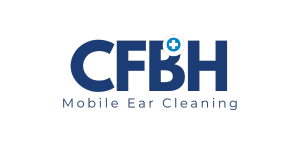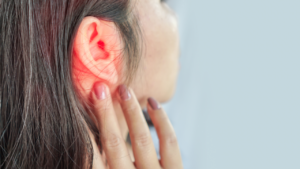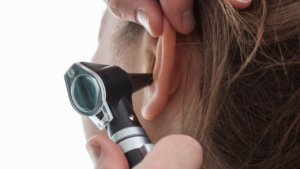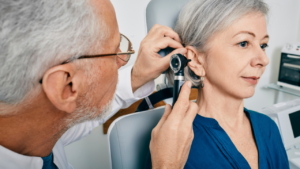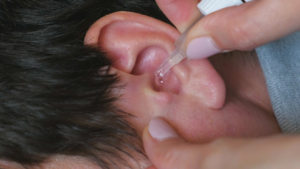
Ear wax buildup can be a common and uncomfortable issue for many people. Ear irrigation is a method used for removing excess ear wax safely and effectively. In this article, we will explore how ear irrigation works, why it is used for ear wax removal, the risks and complications associated with the procedure, who should avoid it, and how to prepare for and what to expect during and after ear irrigation. We will discuss other methods of ear wax removal and home remedies for those who prefer a more natural approach.
Key Takeaways:
- Ear irrigation is a procedure used to remove excess ear wax from the ear canal.
- During ear irrigation, warm water is gently flushed into the ear to dislodge and remove the ear wax.
- Ear irrigation is a safe and effective method of ear wax removal, but it can also have potential risks and complications. Other home remedies should be considered before undergoing ear irrigation.
What Is Ear Irrigation?
Ear irrigation is a procedure used to remove excessive earwax build-up by using water or irrigation solutions to flush out the ear canal.
How Does Ear Irrigation Work?
Ear irrigation works by gently flushing the ear canal with water or a saline solution using an irrigation machine and ear cup to dislodge and remove earwax build-up.
During the procedure, the individual is usually seated comfortably, and the ear is positioned to allow easy access for the healthcare professional administering the irrigation.
The gentle flow of water or saline solution helps soften the hardened earwax, making it easier to flush out without causing any damage or discomfort to the individual.
It is crucial for the water or saline solution to be at body temperature to prevent dizziness or discomfort caused by extreme temperatures in the ear canal.
Why Is Ear Irrigation Used For Ear Wax Removal?
Ear irrigation is utilised for ear wax removal when individuals experience symptoms related to earwax build-up or blockages in the ear canal.
When earwax accumulates in the ear canal, it can lead to various uncomfortable symptoms, such as hearing loss, discomfort, tinnitus, and even vertigo. These symptoms can significantly affect an individual’s quality of life, making it necessary to seek methods such as ear irrigation for removal of ear wax buildup. Ear irrigation involves the gentle flushing of warm water into the ear canal, helping to soften and dislodge stubborn earwax. It is a safe and effective procedure when performed by a trained professional, offering relief from the symptoms caused by earwax blockages.
What Are The Other Methods Of Ear Wax Removal?
Apart from ear irrigation, other methods of ear wax removal include manual removal by a professional, micro-suction or softening the earwax with oil or earwax softeners.
Manual removal by a professional, also known as curettage, involves using specialised tools to gently scoop out the earwax. This method is often preferred for impacted earwax or cases where other techniques are ineffective.
On the other hand, using oil-based earwax softeners can help break down the wax, making it easier to naturally expel. These drops are easy to use and can be applied at home, providing a gentle and non-invasive approach to ear wax removal.
What Are The Risks And Complications Of Ear Irrigation?
Ear irrigation carries risks and complications, such as irritation, infection, and the rare perforation of the eardrum.
When ear irrigation is not performed correctly, it can lead to irritation of the delicate lining of the ear canal. The introduction of water into the ear canal during irrigation can sometimes create a damp environment that is conducive to bacterial growth, potentially resulting in an infection.
One of the most serious risks associated with ear irrigation is the rare possibility of eardrum perforation. This occurs when too much pressure is exerted during the procedure, leading to a puncture or tear in the eardrum, which can cause hearing loss and other complications.
Can Irrigation Lead To Infection?
Ear irrigation can lead to irritation or infection of the ear canal, potentially causing conditions like otitis externa.
It is crucial to recognize the risks associated with improper ear irrigation techniques, as they can introduce bacteria or fungi into the delicate ear canal. Otitis externa, commonly known as swimmer’s ear, is a prevalent complication caused by this. This painful condition occurs when the ear canal becomes inflamed, often resulting in redness, swelling, and discharge. In severe cases, it can even lead to temporary hearing loss and require medical intervention.
Perforation Of The Eardrum
In rare cases, ear irrigation may result in the perforation of the eardrum, highlighting the importance of caution especially in individuals with significant earwax build-up.
When excessive pressure is applied during ear irrigation, it can lead to unintended harm to the delicate eardrum, causing a tear or puncture.
Preexisting conditions, such as a narrow ear canal or a history of eardrum issues, can further increase the risk of complications.
For individuals prone to eardrum perforation or discomfort with traditional methods, microsuction offers a gentle and safe alternative for removing stubborn earwax without the risk of irrigation-related injury.
Tinnitus
Tinnitus, a ringing sensation in the ears, can occur as a complication of ear irrigation, along with other symptoms like vertigo.
After undergoing ear irrigation, some individuals may experience persistent ringing in the ears, which could last for hours or even days, disrupting their daily lives and causing distress. Plus tinnitus, vertigo, a sense of dizziness or spinning, may also develop post-procedure, leading to feelings of imbalance and nausea. These symptoms can be particularly concerning for individuals who already suffer from underlying ear conditions, as they may intensify or prolong the recovery process.
Who Should Not Undergo Ear Irrigation?
Individuals with certain conditions or anatomical factors, such as narrow ear canals or a history of ear surgeries, should avoid ear irrigation and consult a GP or specialist.
It is crucial for those who fall into these categories to recognise the potential risks associated with ear irrigation. Narrow ear canals can be sensitive to the pressure of water flushing, leading to discomfort or even injury. Similarly, individuals with a history of ear surgeries may have altered ear anatomy or healing processes that make them more susceptible to complications during irrigation. In such cases, seeking guidance from a healthcare professional ensures that the ear health is maintained and any necessary treatment is provided.
How To Prepare For Ear Irrigation?
Before undergoing ear irrigation, individuals should follow specific preparation guidelines provided by their healthcare provider or pharmacist.
- The first step in preparing for ear irrigation is to carefully read and understand the instructions provided by the healthcare professional or pharmacist.
- Proper preparation involves gathering all the necessary equipment, such as an ear bulb syringe or irrigation kit, a towel to catch any excess solution, and a bowl or basin to collect the used solution.
- Hygiene is crucial in this process, so make sure to wash your hands thoroughly before handling any equipment. It is also advised to sit comfortably and have a mirror nearby for better visibility during the procedure.
What To Expect During And After Ear Irrigation?
During ear irrigation, individuals can expect to feel mild pressure and hear the sound of water flushing the ear canal, followed by post-procedure aftercare instructions.
After the gentle pressure subsides, individuals may experience a sense of relief as the accumulated earwax is removed. It is common to hear a satisfying swishing or gurgling noise as the water efficiently cleanses the ear.
Once the procedure is completed, the healthcare provider will typically provide guidance on how to keep the ear dry, which may include avoiding swimming or submerging the ear in water for a specific period. They might recommend using gentle drops to prevent any discomfort or irritation.
How often should ear irrigation be performed?
The frequency of ear irrigation depends on individual factors such as the severity of earwax build-up and medical guidelines provided by healthcare professionals.
Regarding earwax removal, it’s crucial to strike a balance between removing excess wax and avoiding irritation or injury to the delicate ear canal. Healthcare providers typically recommend ear irrigation for individuals with excessive wax build-up that cannot be managed with at-home remedies. Factors like the frequency of previous irrigations, the type of irrigation solution used, and any underlying ear conditions are key considerations in determining the appropriate interval between sessions.
What Are The Home Remedies For Ear Wax Removal?
There are various home remedies for ear wax removal, including the use of mineral oil drops, hydrogen peroxide drops, and natural saline solutions.
Some people find that mineral oil drops can effectively soften ear wax, making it easier to remove naturally or with gentle irrigation. Likewise, hydrogen peroxide drops are often used to break down wax buildup and facilitate its expulsion. Using natural saline solutions can help loosen wax and alleviate discomfort associated with blockage. These methods are generally considered safe, but it’s important to follow proper instructions and consult a healthcare provider if you experience persistent ear issues.
Mineral Oil Drops
Mineral oil drops are a common home remedy for earwax removal, gently softening the earwax to facilitate its natural expulsion from the ear canals.
This method works by applying a few drops of mineral oil into the ear canal, allowing it to penetrate and break down the hardened earwax. Mineral oil creates a film over the earwax, which helps in loosening it gradually, making it easier for the wax to move out of the ear. The lubricating properties of mineral oil reduce irritation and discomfort during the removal process.
Hydrogen Peroxide Drops
Hydrogen peroxide drops can help in earwax removal by loosening the wax and aiding in its elimination from the ear canal.
Plus breaking down earwax, hydrogen peroxide drops also have bubbling action, which can effectively dislodge stubborn wax buildup, making it easier for the ear to naturally clear it out. It is essential to use the drops as directed by healthcare professionals to avoid any potential side effects or damage to the delicate ear structures. Regular use of hydrogen peroxide drops can contribute to maintaining healthy ear hygiene and preventing earwax blockages that may lead to discomfort or hearing issues.
Warm Water And Salt Solution
A warm water and salt solution can be used for earwax removal through gentle irrigation to flush out excess earwax and debris.
This natural method helps to loosen hardened earwax, making it easier to remove without damaging the delicate ear canal. The warm water softens the wax, while the salt solution aids in breaking it down, providing a gentle yet effective means of cleaning the ears.
Ear irrigation with this solution is particularly beneficial for individuals prone to earwax buildup or those with impacted wax. It offers a safe alternative to traditional methods that may involve ear drops or mechanical tools, reducing the risk of injury and discomfort.
Ear Wax Removal Kits
Ear wax removal kits provide specialised tools and solutions for safely removing earwax at home, offering convenience and ease of use.
These kits are designed to help individuals manage earwax build-up without the need for frequent visits to healthcare professionals. By having access to essential tools like ear drops, bulb syringes, and specialised tools for ear wax extraction, individuals can take proactive steps in maintaining their ear health. These kits often come with user-friendly instructions, making the process straightforward and uncomplicated.
One of the key advantages of using ear wax removal kits is the ability to address ear discomfort and hearing issues promptly and efficiently. By following proper guidelines and safety precautions, individuals can safely manage earwax build-up in the comfort of their own homes, saving time and money that would otherwise be spent on professional ear cleaning services.
